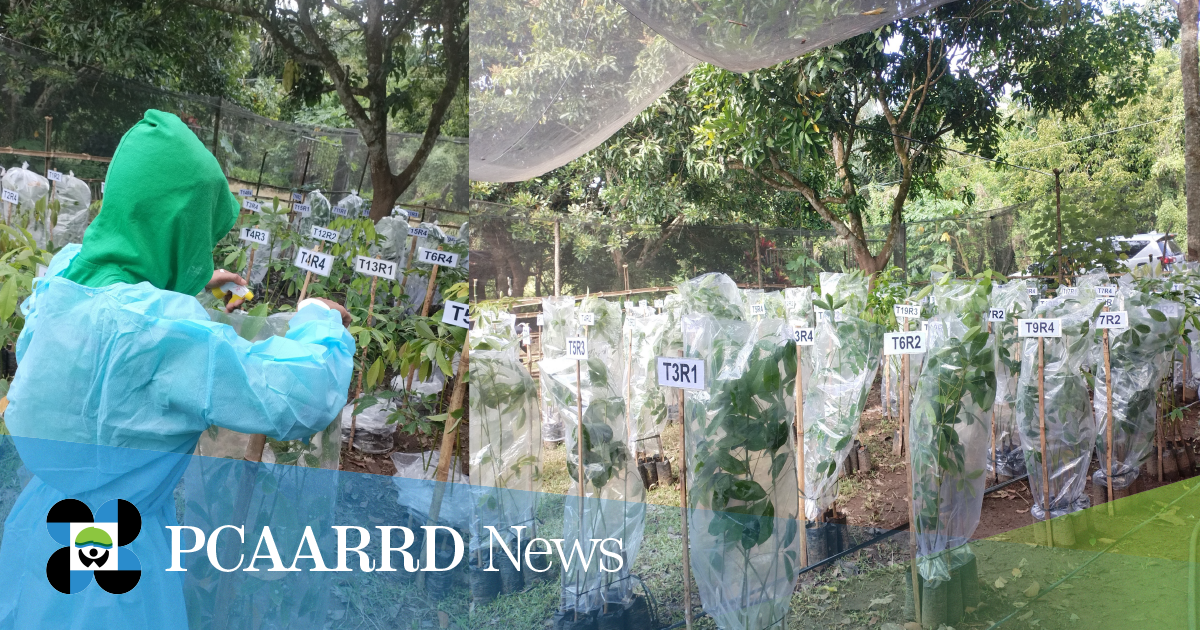A study conducted at the University of Southern Mindanao (USM) found 18 endophytic fungi that were highly antagonistic against several leaf pathogens of rubber tree (Hevea brasiliensis Muell. Arg.). The identified endophytes are potential biocontrol agents, which are sustainable and environment-friendly alternatives to chemical control of leaf diseases. Endophytes are either a fungus or bacteria that inhabit plants.
The study, “Endophytes as Biocontrol Agents Against Major and Emerging Leaf Diseases of Rubber,” led by Dr. Tamie C. Solpot was funded by the Philippine Council for Agriculture, Aquatic and Natural Resources Research and Development of the Department of Science and Technology (DOST-PCAARRD).
Rubber production in the Philippines
Rubber is considered as one of the Philippines’ priority commodities, providing promising income for farmers. Despite its relatively small proportion in terms of natural rubber production, the global rubber industry recognizes the country’s potential in rubber production, with SOCCSKSARGEN being the top producing region in the country.
However, in recent years, a decline in rubber production was observed due to emergence and re-emergence of leaf diseases. The decline poses a threat to the growth of rubber trees, which can lead to reduced latex yield, increased production costs, and losses in plantation areas. To address these challenges, traditional approaches such as, chemical, genetic, and cultural practices have been resorted to or utilized to control these diseases.
With North Cotabato as one of the major rubber producing provinces in the country, five representative municipalities were selected for the conduct of the study. The 18 identified endophytic fungi were evaluated to be potential biocontrol agents against foliar pathogens such as Colletotrichum sp., Corynespora cassiicola, Phytophthora palmivora, and Pestalotiopsis sp.
Endophytes as biocontrol agents
The effectiveness of the potential biocontrol agents were shown through eradicative and protective applications among target diseases caused by Colletotrichum gloesporioides, Phytophthora palmivora, and Corynespora cassiicola with 20 days of pathogen inoculation.
Results showed a reduction in infections of major rubber diseases, with significant lowest disease severity of 1.62% observed on the protective application of endophytes against Colletotrichum sp.. The other 17 endophytes with means ranging from 2.20%-5.56%, were found to be comparable to the effectiveness of Trichoderma (biological control) and Difenoconazole (chemical control), with means of 4.08% and 3.69%, respectively.
Protective application of endophytes also showed similar results with the said biological and chemical controls when applied against C. cassiicola with one endophyte showing lowest disease severity of 3.08%.
On the other hand, the eradicative application of eight endophytes against Colletotrichum sp. was rated effective against the said pathogens with the lowest disease severity of 4.42%. Moreover, with the same type of application, the control on leaf fall of rubber was successful by 11.38% up to 65.38%.
Further, the study also identified seven major and emerging foliar diseases among farms in North Cotabato, namely Colletotrichum leaf spot, Corynespora leaf fall/spot, Phytophthora leaf fall/blight, powdery mildew, bird’s eye-spot disease, Pestalotiopsis leaf fall, and algal spot disease. The study also documented the first report of Colletotrichum tropicale in the country.
As a way forward, the project calls for the need to formulate and implement management strategies to target specific leaf diseases. These can further be attained through the formulation and initial testing of the identified biocontrol agents within the field or plantation.
The said project is an entry for Best Research Paper, which was presented during the National Symposium on Agriculture, Aquatic and Natural Resources Research and Development (NSAARRD) on October 2, 2024. Winners of the award will be conferred during the DOST-PCAARRD’s 2024 S&T Awards and Recognition ceremony in November 2024.
NSAARRD, annually spearheaded by DOST-PCAARRD, recognizes outstanding R&D contributions in the agriculture, aquatic, and natural resources sector in the country.

